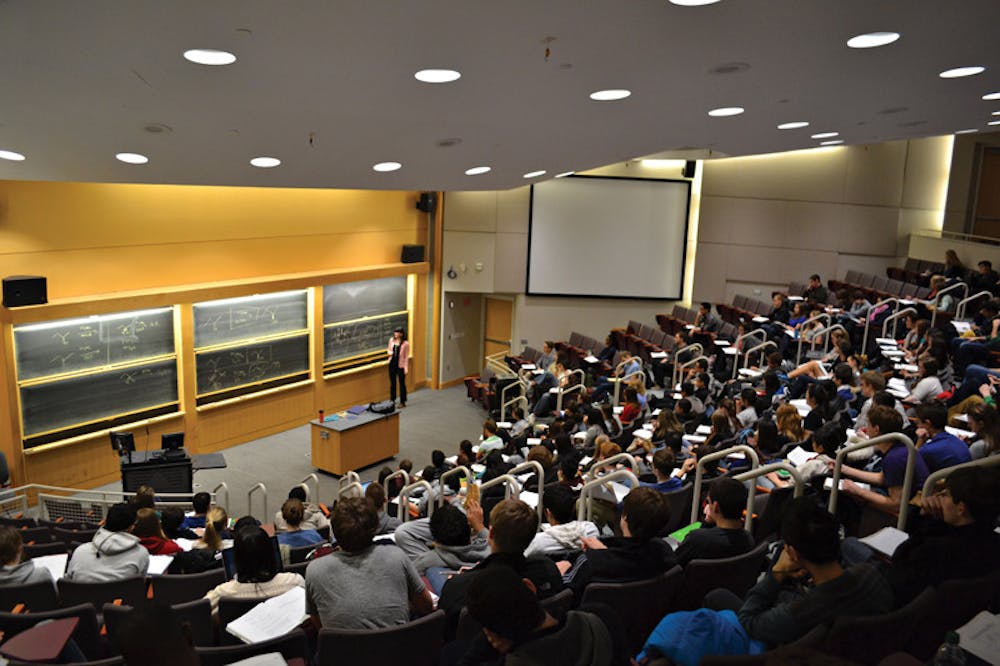University administrators and faculty members will overhaul introductory courses in STEM — science, technology, engineering and math — and focus on improving undergraduate education in STEM through an initiative partially funded by the Association of American Universities, according to a University press release.
The three-year initiative will focus on implementing “evidence-based practices” — teaching methods proven effective through research, said David Targan ’78, associate dean of the college for science education. Brown was selected from 31 applicants to become one of eight institutions to pilot the project.
The AAU and the University each will provide $500,000 in funding for the initiative over three years. Faculty members can apply for grants from the initiative to improve their classes, Targan said, and some of the funding will be used to hire graduate and undergraduate teaching assistants in STEM courses.
“Why is it that people who spend their lives making decisions with data do not use data to improve their decisions about teaching?” said Dean of the College Katherine Bergeron. “That’s the AAU’s question.”
Aiming to attract and retain students, administrators and faculty members will work to better integrate math into science and engineering classes, promote hands-on research and reform large lectures, Targan said.
STEM fields have a high attrition rate — many students change their intended concentrations after the first year, Targan said. The trend is particularly pronounced in the physical sciences, he added.
One common explanation for the high attrition rate is that students feel disengaged in their large introductory science lectures, he said.
Research also suggests certain teaching methods may keep students more engaged. Students can be active learners in large classes by asking questions or at least writing them down, Targan said.
Another strategy for engaging students involves changing the format of the lecture entirely. This semester, Associate Professor of Economics Pedro Dal Bo’s section of ECON 1110: “Intermediate Microeconomics” will feature two lectures and a problem session instead of three lectures, said Kathy Takayama, executive director of the Sheridan Center for Teaching and Learning and adjunct professor of biology. This innovative approach is called a “blended classroom,” she said.
Dal Bo will create 10-minute videos for students to watch prior to the problem session. During the session he will help groups of three students on practice problems, Takayama said.
The creation of more “blended classrooms” may be part of the AAU initiative, Takayama said.
Integrating math
The first phase of the initiative puts a greater emphasis on “mathematical competency” in STEM courses, Targan said.
Students may have taken math “but don’t make the connection between the math class and the new context of a science subject matter,” he said.
Science classes would review math basics in a format that could involve collaboration between departments, he said.
Students may have “difficulty turning hard science problems into mathematical equations,” Takayama said.
CHEM 0100: “Introductory Chemistry” and ENGN 0030: “Introduction to Engineering” are among the first courses to be reviewed for added “mathematical competency,” Takayama said.
“One of the truly Brown things about this endeavor is that professors will meet across disciplines to compare some of their approaches and share ways in which these approaches have been successful,” Takayama said.
For instance, she said, some science faculty members from across disciplines have met together to discuss teaching techniques every other Friday for three years.
Takayama, Targan and Jim Valles, professor of physics and chair of the physics department, are the three principal investigators for the initiative.
The resources provided by the initiative make it possible to make curricular changes for which there is already momentum, Valles said.
Growing STEM
Each school selected for the project submitted a grant request detailing its plans for reforming its STEM courses and its progress in doing so thus far, she said.
Brown’s strengths included a focus on “mathematical competency,” interdisciplinary teaching and hands-on research classes, said Emily Miller, project manager for the initiative.
Miller cited strong support for the STEM initiative among Brown faculty members and administrators.
Bergeron, who helped write the AAU grant proposal, recently announced plans to leave the University in December to become president of Connecticut College. But she said her departure will not affect the STEM initiative, given the number of other administrators and faculty members involved with the project.
“We take the idea of undergraduate education very seriously at Brown. We’re glad that AAU saw that and supported our efforts, which we think are going to make a big difference for the future,” Bergeron said.

ADVERTISEMENT




